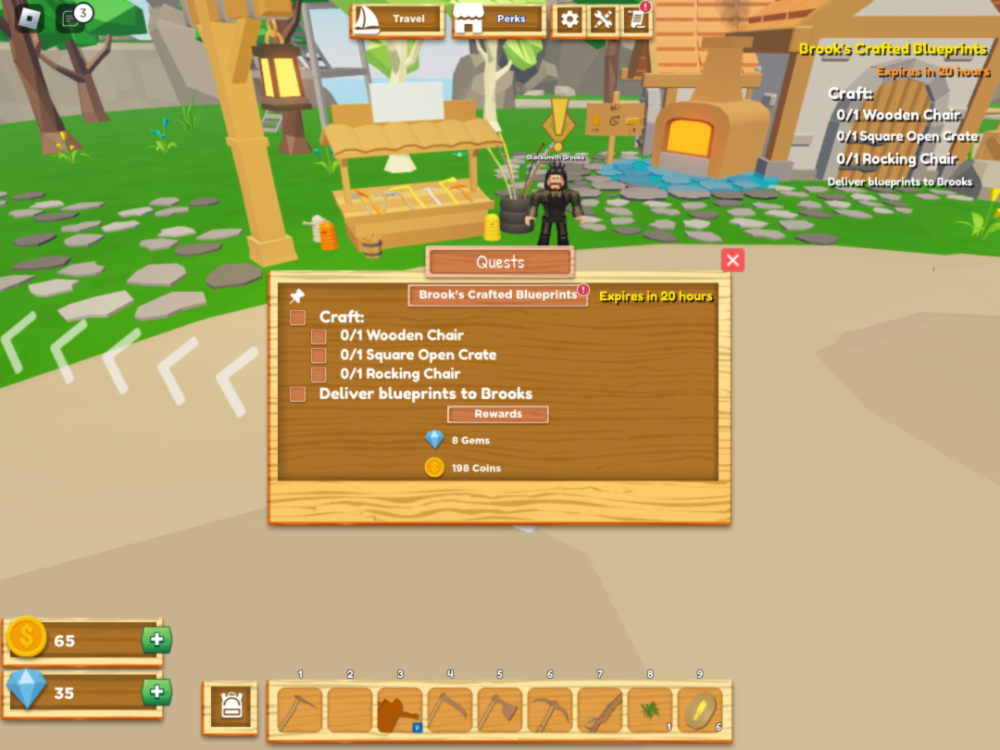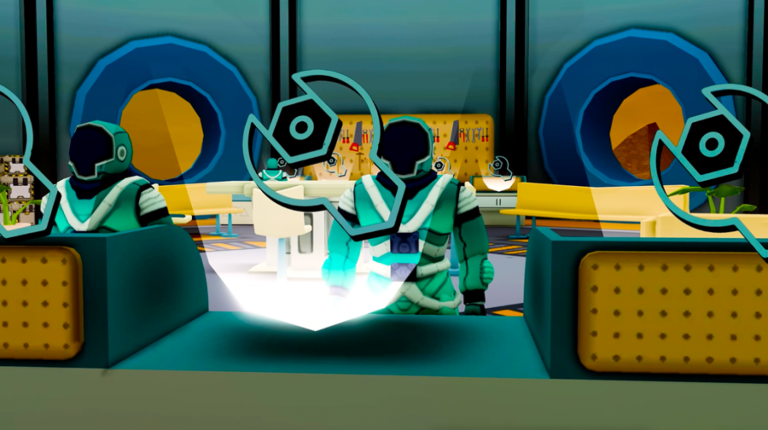Want Your Child to Set More (and better) Goals? Practice this Skill with Video Games!
When you want to achieve something, how do you start the process? Do you set your goal and then break it down into a checklist of steps? Do you tell your family and friends so they can help cheer you on?
Goal setting is something we do all the time. Whether it’s a personal new year’s resolution or a week-long work project, pretty much everyone you know is always working towards something. It’s in our nature to set our eyes on a prize and then go after it.
But choosing a goal is the easy part. Executing the plan to achieve a goal is much, much harder.
And as a parent, it’s frustrating to see your child not working towards the academic or life goals you feel they should be striving for. But — even if your kiddo is slacking on their math homework — they have goals of their own.
And if they’re a gamer, they’re likely spending more hours than you care for working towards these seemingly frivolous goals.
Our advice — don’t discount these personal gaming goals your child is working hard to accomplish. Choosing goals (and following through with them) is a skill they need to practice. And the more they work on achieving success in their passions, the better they’ll get at working through goals of all kinds.
Let’s explore how gamers improve their goal-setting (and achieving) skills with video games.
Game-Directed Goals
Most games have an objective — a storyline or task that pushes the gamer forward. There are big game goals, like beating the game, saving the princess, winning the tournament, etc. And then there are smaller tasks that you accomplish along the way — like beating a level or winning an individual game — to help you achieve the larger goal.
And then there are the side quests. You can’t forget about side quests. These objectives aren’t necessary to progress, but they help you level up or gain helpful resources. They add a little extra challenge in exchange for an immediate reward.

Doodle World side quest
What do all of these have in common?
They are goals that the game developers have set out for their players. And they often come with some sort of tracking within the game — like a status bar or checklist. As your child makes progress on a task, they get a visual representation of how close they are to achieving it. It’s a nifty little boost in motivation that helps to keep them going.
Why game-directed goals are beneficial for your child
Practice, practice, practice!
Goal setting and achieving is a skill just like any other. And the more you practice it, the better you’ll get. And games are a great way for kids to independently learn the ins and outs of goal setting.
Large goals, like beating an entire Assassin’s Creed game, can feel daunting. It involves hours and hours of gameplay. But by taking it one step at a time, a player finds their path to the end. The story is your guide, introducing you to the right people at the right time.
And games present you with tasks that allow you to level up incrementally as you go. If you try to jump ahead to a later point, you’ll likely find the tasks too challenging. But as you play, learn, and practice, you are challenged at just the right amount to keep you motivated and moving forward. It’s a tricky balance to strike, but one that successful game developers have mastered.
This breaking down of a goal is an incredibly important skill in both school and the workplace. Knowing the steps you need to take to accomplish a large task can make all the difference in actually achieving it. And gamers get to see how this works on the daily.

Farmstead quest image.
Self-Directed Gaming Goals
While game-directed goals are great for practicing this skill, what’s really exciting is seeing your child set their own gaming goals. The excitement when they accomplish the difficult task they’ve set for themselves is definitely worth celebrating.
What self-directed goal setting looks like in gamers
For non-gamers or beginner games, the video games themselves present plenty of challenges. Getting to the end is a huge accomplishment.
But for more experienced gamers, getting to the end of a game they enjoy is just the beginning. There are loads of more ways to up the complexity and fun by adding their own unique challenges to the game. And Roblox games are the perfect place to implement these goals.
YouTube gamers provide loads of examples of this. Many of them have a favorite game or type of game. And they want to create more videos for their audience around that game. So they improvise.
BigB is a popular, family-friendly YouTuber who does many, many challenges in the game Rainbow Friends. Can he beat it without ever boxing up? Can he finish the game by himself? How quickly can he speedrun it?
Another fun choice to inspire self-directed goal setting is Thinknoodles. His Roblox game of choice is Doors, and he’s done multiple challenges to keep it interesting and challenging. Can he play without crouching? Can he beat the game with no sound? How many game badges can he get in a single run?
But even without YouTube gamer inspiration, your child likely already sets their own gaming goals. Not so sure? Just try asking them — what are you working on today?
Are they leveling up so they can unlock the next character in Kaiju Universe?
Did their friend tell them about a way to glitch out of a game map, so they’re giving it a try?
Are they playing until they earn enough money to get the pool in Mega Mansion Tycoon?
Do they want to catch every fish species in Farmstead?

Roblox Game Kaiju Universe
All of these are amazing goals they are setting for themselves! And that’s a great thing for their future!
4 Ways Goal Setting Leads to Real-World Success
Setting goals and then striving to accomplish them — it’s a skill we use every day. Here are just a few ways that practicing this skill can lead to more real-world success.
1. Improves Resource Management
When you’re overwhelmed, accomplishing your goals gets harder. But learning how to work through the overwhelm and still make progress is incredibly important. And a lot of that overwhelm can be squashed with proper resource management — and specifically time management.
What needs to be done now, and what can wait? What needs to be done by you, and what is best to delegate to others? Where should you spend your resources, and what is a lower priority? Video games can hone the decision-making skills needed for goal achievement.
2. Increases Ability to Break Down Complicated Tasks
If you can’t see a path to your goal, you can’t accomplish it. But no matter how large the goal is, if you can lay out a plan, you can start making progress. This is true no matter if you’re working towards beating a complex video game or trying to pay down thousands of dollars in debt.
Video games provide loads of practice (and lots of visual representations) for how to break down complicated goals into manageable steps — vastly improving your chances of making or even exceeding your goal.
3. Teaches Resilience
We aren’t always going to accomplish our goals on the first try (or even the second or the third). Failures happen. But having the tenacity to give it another go is a much-needed skill many people simply don’t possess.
Luckily, gamers get lots and lots of practice in resilience. Video games are not meant to be won without a few deaths along the way. You have to fail to learn. Then fail a few more times as you put this new knowledge into practice. But if you don’t quit, you will eventually win. And it’s those hard-earned wins that carry the most excitement and pride.
4. Builds Confidence and Independence
It’s always the best feeling to check something off your to-do list. Especially something big that you’ve been working on for weeks. In those moments you feel like you can tackle anything the world throws your way. And that’s a great feeling for your kids to experience too.
When they accomplish something new, it’s an automatic confidence boost. They made a plan, stuck with it, overcame challenges, and conquered their goal. And the more they do it (whether it’s video games or school work), the more they build confidence in themselves and their abilities. And that’s a huge win for everyone.
Find the Right Balance of Gaming and Learning with Kinjo
Want to see your child playing more skill-building games? Check out the Kinjo app!
When you pair Kinjo’s motivating app with Roblox, your child will discover the best games for learning. They’ll play more complex games that help them practice goal setting, reading, social, math, and a whole host of other skills.
It’s playtime with a purpose, and gaming you can feel good about. Ditch the gaming and screen time worries and download Kinjo on your child’s device today!








